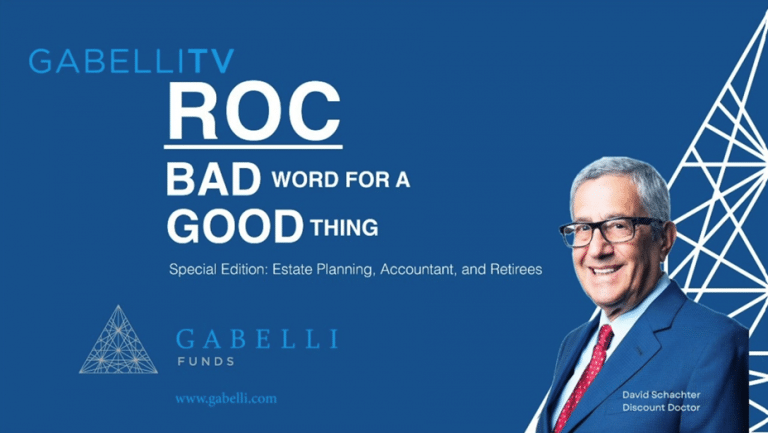3Q24 Commentary
It was a bumpy ride for stocks in the third quarter. A stream of inconsistent economic data combined with several disruptive events paused the bull market that had been largely uninterrupted for much of the last two years. During the quarter the labor market continued to soften, and the “Sahm Rule”, historically a reliable indicator of US recessions, was triggered following a weak July nonfarm payrolls report. In response to slower economic activity and moderating inflation, the Federal Reserve officially began an easing cycle in September ~2.5 years after initial liftoff with a somewhat surprising 50 basis point reduction to the target Fed Funds Rate. In US politics, President Biden’s historic decision to withdraw from the 2024 election was followed by two assassination attempts on former President Trump. Elsewhere, the quarter featured the biggest IT outage in history, a couple of large labor strikes, and high-profile antitrust case developments involving the likes of Alphabet, Apple and Visa.
While major equity indices ended the quarter higher despite these dynamics, volatility was elevated and performance was marked by a change in leadership, with small caps outperforming large caps, and value outperforming growth. It would not be surprising to see the higher level of volatility persist in the coming months as investors continue to assess prospects for a soft landing. As we enter a crucial fourth quarter we remain confident that our portfolio of evergreen franchises and technology leaders can continue to deliver strong earnings growth, even if economic activity continues to slow.
THE ECONOMY
Economic data released during the third quarter was mixed, and investor debate around the achievability of a soft landing has intensified with a Fed rate cutting cycle now officially underway.
Beginning with the labor market, private sector payroll employment excluding defensive sectors such as education and healthcare fell by more than 100k in the third quarter and sits nearly 300k below the February 2023 peak. The Bureau of Labor Statistics’ (BLS) latest Job Openings and Labor Turnover Survey (JOLTS) indicates a softer job market currently than at any time in the last three years with just 1.1 job vacancies per unemployed person (down from a March 2022 peak of 2.0). In August, the BLS revised downward its estimate of jobs created during the 12-month period through the end of March by more than 800k – the largest such revision since the 2008 Global Financial Crisis.
Slower payrolls growth and fewer job openings led to a surprise 20 basis point month-over-month increase in July’s unemployment rate (to 4.3%), triggering the widely referenced “Sahm Rule” which identifies the start of a recession following a rise in the three-month average unemployment rate by 0.5% in a 12-month period. The Sahm Rule has correctly identified every US recession since 1970 with only one false alarm. That said, it has been less accurate in other developed markets, and its author has cautioned against its reliability in the current environment, stating it “may be overstating the weakness in the economy” at present. Indeed, the unemployment rate ticked 10 basis points lower in both the August and September nonfarm payrolls reports, potentially suggesting noisier than usual data.
Beyond softer labor market fundamentals, manufacturing data remained weak in the third quarter. The Institute for Supply Management’s US Manufacturing Purchasing Managers’ Index (PMI) reports hit new year-to-date lows in 3Q, and this data series has now indicated contracting activity (a reading below 50) in 22 of the last 23 months. Certain components of the report which have historically been useful forward indicators, including Employment and New Orders, have warned of recession for several months.
Consumer spending activity on the other hand has been more resilient. Retail Sales activity according to the US Census Bureau grew ~3.3% y/y in both July and August, reflecting no incremental slowdown compared with what was observed during the second quarter. The Bureau of Economic Analysis’s Personal Consumption Expenditures (PCE) index even strengthened in 3Q, supporting positive revisions to the Atlanta Fed’s widely followed GDPNow model which is now calling for 3.1% real 3Q US GDP growth, compared with a 2% forecast published earlier in the third quarter.
Curiously, despite softer cyclical employment, weak manufacturing activity, and stable, though hardly stellar, consumption data, the US government revised second quarter Gross Domestic Income up ~$800bn (a material +3.6% positive revision). This reflects a stronger than previously thought savings rate. While the revision is backward-looking, many economists and policymakers argue that a higher savings rate means consumers have sufficient resources to support continued consumption growth even if the labor market further deteriorates. This will be a key dynamic to monitor as the largest Federal Reserve rate hiking cycle in decades works its way through the economy.
The good news is that softer economic growth fundamentals have coincided with a steady moderation in inflation. Most recently, the Fed’s preferred Core Personal Consumption Expenditures Deflator printed at 2.7% in August (with a six-month average of 2.4%) and is closing in on the Fed’s stated 2% inflation target. The composition of the report suggests further disinflation ahead, as both core services (excluding housing, which tends to lag other components) and core goods inflation fell month-over-month to annualized rates below 2%. Incremental confidence on the path of inflation led to Federal Reserve Chairman Jerome Powell’s assessment that, “The balance of risks to (the Fed’s) two mandates has changed,” underpinning a 50 basis point reduction in the target Fed Funds Rate announced at the Federal Open Market Committee’s September meeting.
Thus, there may be some cracks forming in the outlook for economic growth but inflation appears in check and the Fed has signaled its commitment to use its tools to achieve the elusive soft landing. Of note, historically in the US, nine of the last 13 monetary policy tightening cycles have ended in recession, while four have averted downturn and exhibited soft landing characteristics.
FINANCIAL MARKETS
Stocks appreciated in 3Q for the fourth consecutive quarter. Major indices closed at or near all-time highs, though performance featured volatility and leadership rotation. The S&P 500 experienced an 8% drawdown between mid-July and early-August before a sharp recovery took place as the market prepared for an inflection in the interest rate cycle. The Chicago Board Options Exchange’s Volatility Index (VIX) more than tripled to post-COVID highs during this episode, fueled by a complex crosscurrent of soft economic data, positioning dynamics (revealed following a surprise hawkish shift in Japanese monetary policy which drove sudden strength in the Japanese Yen and a resulting unwind in leveraged Yen-funded positions in US assets) as well as both geopolitical and political uncertainties.
The Federal Open Market Committee’s Fed Funds Rate action in late-September drove a risk-on rally, reflecting Chair Powell’s suggestion that the magnitude of the rate cut should be taken by investors as a “Sign of our commitment not to get behind the curve.” Thus, the market’s initial view is that the change in monetary policy is coming preemptively, rather than in reaction to a slowdown. This assessment will likely be tested in the months to come, and we expect the equity market will continue to exhibit elevated sensitivity to macroeconomic data releases.
Internationally, starting with Europe, economic data remained sluggish though no worse than anticipated, and the start of rate cutting cycles by the Bank of England (at the August meeting) and European Central Bank (at the September meeting) supported stock prices. The Bank of Japan, as mentioned, kicked off a monetary policy tightening cycle at a July meeting which created dislocation in risk asset markets and drove the Nikkei 225 Index down 12% in a single day – the largest daily move since 1987. This drawdown proved short-lived, as supportive commentary from central bank officials combined with resilient company earnings expectations drove a sharp rebound to pre-meeting stock price levels by the end of the quarter.
China also came into focus during the quarter. Initially, continued deterioration in economic data, ongoing net investment outflows, and rising fear of deflation drove a new cycle low in the CSI 300 index. However, a stunning package of monetary stimulus was followed by an unscheduled Politburo meeting and commitment to fiscal support, leading to a sharp rebound in Chinese stocks at the end of the quarter. It is early to say whether these measures will help pull the country out of a multi-year economic slowdown, but prospects for a recovery in the world’s second largest economy will undoubtedly be an investment theme in the quarters to come.
ARTIFICIAL INTELLIGENCE
The Artificial Intelligence (AI) investment cycle accelerated in the third quarter, evidenced by increases in capital expenditure outlooks from Alphabet, Amazon, Meta Platforms and Microsoft which are now collectively expected to spend ~$230bn in 2025 (this staggering outlook is up roughly 30% since the beginning of the year). Much of the investments are being allocated towards AI computing kits and the associated equipment and physical infrastructure needed to power the technology.
As investment levels have picked up, so to has investor debate around the size and timing of the commercial opportunity for AI. Widely circulated memos published during the third quarter by the likes of Goldman Sachs and Sequoia called into question a lack of financial returns to-date on such enormous capital investments. Alphabet CEO Sundar Pichai stoked concerns about the rationale for such large capex plans with his earnings call comment that, “When we go through a (technology) curve like this, the risk of under-investing is dramatically greater than the risk of over-investing.”
On the other hand, there were several encouraging developments for the AI space during the quarter. OpenAI is targeting revenue growth of ~300% next year (to nearly $12bn) and sees a path to $100bn in annual revenue by 2029. Meta AI has eclipsed 400mm monthly active users and has seen usage of its LLaMA language model grow more than 10x since the beginning of the year. Intuit announced plans to replace 10% of its workforce with AI, and fintech giant Klarna launched an AI chatbot which it expects will eliminate 2/3 of its customer support headcount. Finally, data published by payments processor Stripe shows that AI companies on its platform are scaling revenues significantly faster than the previous generation of Software-as-a-Service companies (for example, AI companies on Stripe’s platform which scaled to $30mm+ in annualized revenues did so 5x faster than past SaaS companies on average).
The artificial intelligence investment cycle is still in early innings. We remain excited by the promise of AI, and we are broadly impressed by the financial results already being reported by many companies in our portfolio. Stock market volatility for a new technology like AI is inevitable, but we continue to see this as one of the most important investment themes in a generation.
LOOKING FORWARD
With a mixed view on the outlook for economic growth, we enter 4Q with a slightly more measured approach to risk taking. We are balancing reasons for optimism (resilient consumption, the promise of AI, and confidence among high-income consumers and large businesses) with discipline to reflect uncertainty around dynamics like monetary policy lags, a softening labor market, rising debt burdens, and of course, the upcoming US election cycle.
John T. Belton, CFA
Howard F. Ward, CFA
Howard Ward and John Belton are CO-Portfolio Managers of The Gabelli Growth Fund









